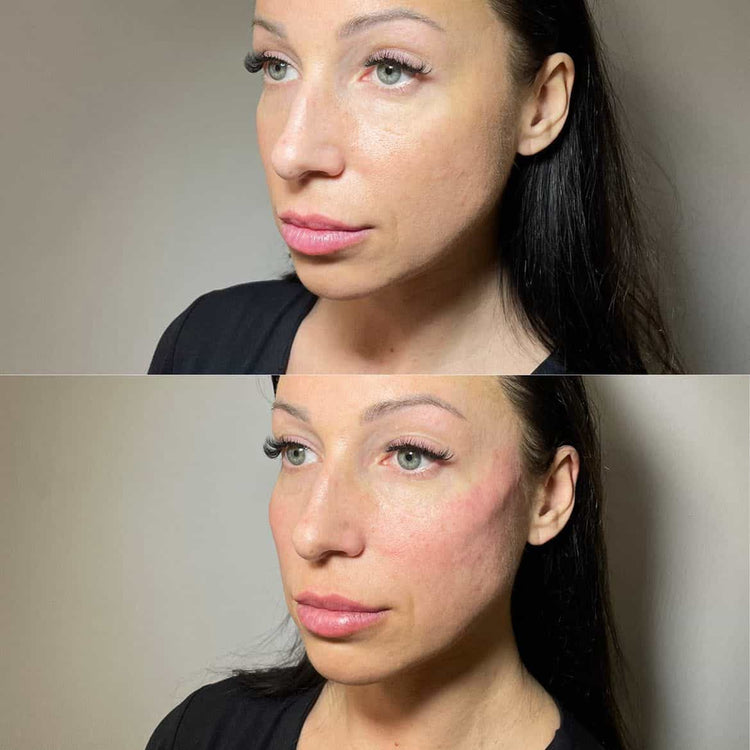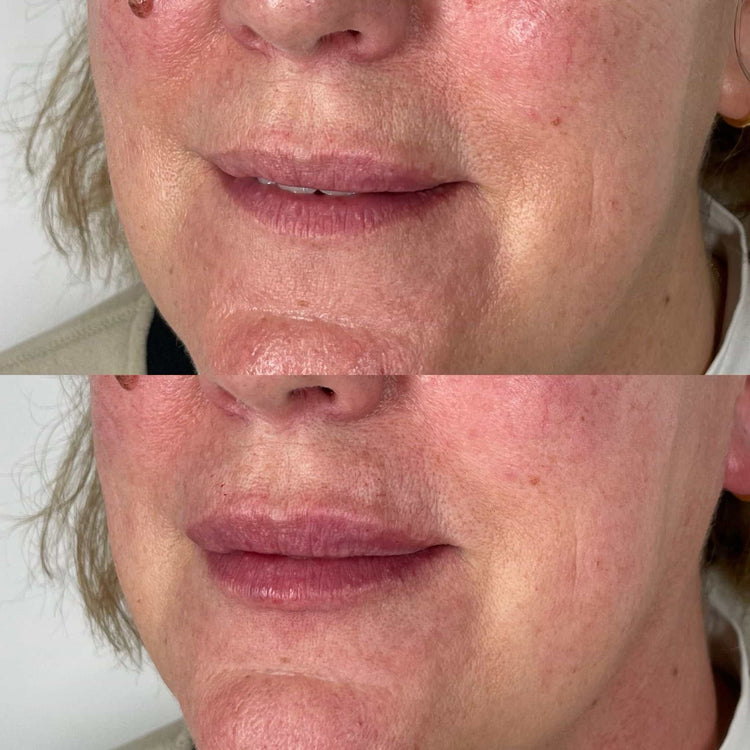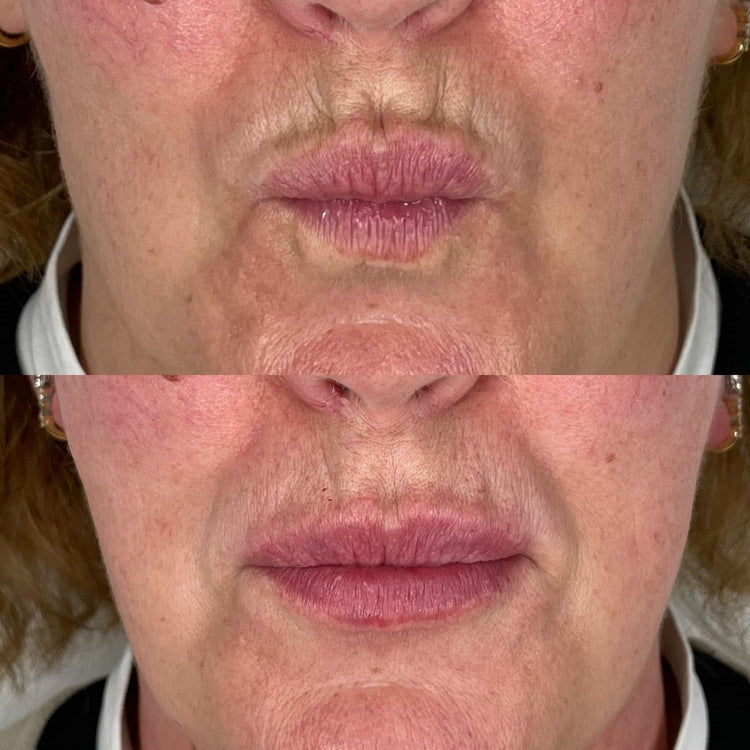Dermal Fillers for Lip Augmentation
Dermal fillers have revolutionized the field of cosmetic enhancement, offering a non-surgical route to achieving fuller, more defined lips. In the UK, the popularity of lip augmentation using dermal fillers has surged in recent years, with individuals seeking subtle enhancements or dramatic transformations.
Types of Fillers Used
A variety of dermal filler types are utilized for lip augmentation in the UK, each possessing unique characteristics and suitability for different desired outcomes.
Hyaluronic acid (HA) fillers remain the most popular choice due to their biocompatibility, ability to attract and retain moisture, and temporary nature. HA fillers like Juvederm, Restylane, and Belotero come in various formulations with different viscosities, allowing practitioners to customize treatment based on individual needs. For individuals seeking longer-lasting results, poly-L-lactic acid (PLLA) fillers, such as Sculptra Aesthetic, stimulate collagen production for a gradual volumizing effect that can last up to two years.
Calcium hydroxylapatite (CaHA), found in fillers like Radiesse, provides immediate volume and support due to its unique microsphere structure. It is often preferred for patients seeking a more structured lip enhancement.

The Procedure
The procedure for lip augmentation using dermal fillers typically involves injecting the chosen filler substance into specific points of the lips.
Prior to treatment, a topical anesthetic cream may be applied to minimize discomfort. Once numbed, the practitioner will use a fine needle or cannula to inject the filler, strategically targeting areas such as the cupid’s bow, vermilion border (the area between the lip and the skin), and center of the lips. The amount of filler injected is customized based on the desired outcome and individual lip structure.
The entire procedure usually takes around 30-60 minutes. Patients may experience some mild swelling, redness, or bruising after the treatment, which typically subsides within a few days.
Duration and Results
Dermal fillers provide a non-surgical pathway to fuller lips, gaining immense popularity in the UK for both subtle and dramatic transformations.
Hyaluronic acid (HA) fillers are the most common choice due to their biocompatibility and temporary nature. They attract moisture, plumping the lips, and come in various viscosities for customized treatments.
For longer-lasting results, poly-L-lactic acid (PLLA) fillers stimulate collagen production, leading to a gradual volumizing effect that can persist up to two years. Calcium hydroxylapatite (CaHA), found in fillers like Radiesse, delivers immediate volume and structure, making it suitable for those seeking defined enhancements.
The lip augmentation procedure involves injecting the chosen filler into specific points of the lips after topical anesthetic application.
A fine needle or cannula is used to strategically target areas such as the cupid’s bow, vermilion border, and center of the lips.
The duration of treatment typically ranges from 30 to 60 minutes. Mild swelling, redness, or bruising are common temporary side effects that subside within a few days.
Results with HA fillers usually last six months to a year, while PLLA fillers can provide enhancement for up to two years.
CaHA fillers often last around 12-18 months.
Benefits and Risks
Dermal fillers have revolutionized the field of cosmetic enhancement, offering a non-surgical route to achieving fuller, more defined lips. In the UK, the popularity of lip augmentation using dermal fillers has surged in recent years, with individuals seeking subtle enhancements or dramatic transformations.
A variety of dermal filler types are utilized for lip augmentation in the UK, each possessing unique characteristics and suitability for different desired outcomes.
- Hyaluronic acid (HA) fillers remain the most popular choice due to their biocompatibility, ability to attract and retain moisture, and temporary nature. HA fillers like Juvederm, Restylane, and Belotero come in various formulations with different viscosities, allowing practitioners to customize treatment based on individual needs.
- For individuals seeking longer-lasting results, poly-L-lactic acid (PLLA) fillers, such as Sculptra Aesthetic, stimulate collagen production for a gradual volumizing effect that can last up to two years.
- Calcium hydroxylapatite (CaHA), found in fillers like Radiesse, provides immediate volume and support due to its unique microsphere structure. It is often preferred for patients seeking a more structured lip enhancement.
The procedure for lip augmentation using dermal fillers typically involves injecting the chosen filler substance into specific points of the lips.

Prior to treatment, a topical anesthetic cream may be applied to minimize discomfort. Once numbed, the practitioner will use a fine needle or cannula to inject the filler, strategically targeting areas such as the cupid’s bow, vermilion border (the area between the lip and the skin), and center of the lips. The amount of filler injected is customized based on the desired outcome and individual lip structure.
The entire procedure usually takes around 30-60 minutes. Patients may experience some mild swelling, redness, or bruising after the treatment, which typically subsides within a few days.
Results with HA fillers usually last six months to a year, while PLLA fillers can provide enhancement for up to two years. CaHA fillers often last around 12-18 months.
Cost Considerations
The cost of lip augmentation using dermal fillers in the UK can vary significantly depending on factors such as the type of filler used, the amount required, the practitioner’s experience and location, and the specific clinic.
On average, expect to pay between £200 and £600 per treatment session for lip augmentation with hyaluronic acid (HA) fillers.
Longer-lasting PLLA fillers may cost more, ranging from £400 to £800 or higher per treatment.
Calcium hydroxylapatite (CaHA) fillers typically fall in a similar price range as HA fillers.
It’s important to consult with a qualified and experienced practitioner to discuss your desired outcome, assess your individual needs, and receive an accurate cost estimate for the specific treatment plan they recommend.
Choosing a Provider
Choosing the right provider for lip augmentation using dermal fillers is crucial for achieving safe and satisfying results. Look for a practitioner who is fully qualified and experienced in administering lip filler treatments.
Ideally, the practitioner should hold relevant medical qualifications, such as being a registered doctor, dentist, or nurse prescriber with specialized training in cosmetic injectables.
Inquire about their experience specifically with lip augmentation, the types of fillers they use, and their approach to treatment planning.
Don’t hesitate to ask for before-and-after photos of previous patients to assess their aesthetic skills and style.
Ensure the clinic follows strict hygiene and sterilization protocols to minimize the risk of infection or complications.
Prioritize safety by choosing a practitioner who is transparent about risks and potential side effects associated with lip augmentation.
During your consultation, discuss your desired outcome openly and honestly with the practitioner.
They should listen attentively to your concerns and preferences, provide realistic expectations, and answer all your questions thoroughly.
Trust your instincts and choose a provider who makes you feel comfortable and confident in their expertise.
Aftercare Instructions
Aftercare instructions are crucial for optimal results and minimizing potential complications following lip augmentation with dermal fillers.
For the first few hours after treatment, avoid touching or rubbing your lips excessively. Apply ice packs to reduce swelling and discomfort as needed.
Refrain from consuming hot beverages or spicy foods, as these can irritate the treated area.
It’s important to avoid strenuous activities that may increase blood flow to the face, such as intense exercise or heavy lifting, for at least 24 hours post-treatment.
You should also minimize sun exposure and protect your lips with sunscreen, as the treated area may be more sensitive to UV rays.
Most importantly, avoid any makeup or skincare products on the lips for at least 24 hours after treatment.
Follow any specific instructions provided by your practitioner regarding medication use or other post-treatment care measures.

Attend any scheduled follow-up appointments to monitor healing progress and address any concerns.
Legal Aspects in the UK
The UK has seen a surge in popularity for dermal fillers, particularly for lip augmentation procedures.
Regulations Governing Filler Use
Dermal fillers have revolutionized the field of cosmetic enhancement, offering a non-surgical route to achieving fuller, more defined lips. In the UK, the popularity of lip augmentation using dermal fillers has surged in recent years, with individuals seeking subtle enhancements or dramatic transformations.
A variety of dermal filler types are utilized for lip augmentation in the UK, each possessing unique characteristics and suitability for different desired outcomes.
- Hyaluronic acid (HA) fillers remain the most popular choice due to their biocompatibility, ability to attract and retain moisture, and temporary nature. HA fillers like Juvederm, Restylane, and Belotero come in various formulations with different viscosities, allowing practitioners to customize treatment based on individual needs.
- For individuals seeking longer-lasting results, poly-L-lactic acid (PLLA) fillers, such as Sculptra Aesthetic, stimulate collagen production for a gradual volumizing effect that can last up to two years.
- Calcium hydroxylapatite (CaHA), found in fillers like Radiesse, provides immediate volume and support due to its unique microsphere structure. It is often preferred for patients seeking a more structured lip enhancement.
The procedure for lip augmentation using dermal fillers typically involves injecting the chosen filler substance into specific points of the lips.
Prior to treatment, a topical anesthetic cream may be applied to minimize discomfort. Once numbed, the practitioner will use a fine needle or cannula to inject the filler, strategically targeting areas such as the cupid’s bow, vermilion border (the area between the lip and the skin), and center of the lips. The amount of filler injected is customized based on the desired outcome and individual lip structure.
The entire procedure usually takes around 30-60 minutes. Patients may experience some mild swelling, redness, or bruising after the treatment, which typically subsides within a few days.
Results with HA fillers usually last six months to a year, while PLLA fillers can provide enhancement for up to two years. CaHA fillers often last around 12-18 months.
The cost of lip augmentation using dermal fillers in the UK can vary significantly depending on factors such as the type of filler used, the amount required, the practitioner’s experience and location, and the specific clinic.
On average, expect to pay between £200 and £600 per treatment session for lip augmentation with hyaluronic acid (HA) fillers.
Longer-lasting PLLA fillers may cost more, ranging from £400 to £800 or higher per treatment.
Calcium hydroxylapatite (CaHA) fillers typically fall in a similar price range as HA fillers.
It’s important to consult with a qualified and experienced practitioner to discuss your desired outcome, assess your individual needs, and receive an accurate cost estimate for the specific treatment plan they recommend.
Choosing the right provider for lip augmentation using dermal fillers is crucial for achieving safe and satisfying results. Look for a practitioner who is fully qualified and experienced in administering lip filler treatments.
Ideally, the practitioner should hold relevant medical qualifications, such as being a registered doctor, dentist, or nurse prescriber with specialized training in cosmetic injectables.
Inquire about their experience specifically with lip augmentation, the types of fillers they use, and their approach to treatment planning.
Don’t hesitate to ask for before-and-after photos of previous patients to assess their aesthetic skills and style.
Ensure the clinic follows strict hygiene and sterilization protocols to minimize the risk of infection or complications.
Prioritize safety by choosing a practitioner who is transparent about risks and potential side effects associated with lip augmentation.
During your consultation, discuss your desired outcome openly and honestly with the practitioner.
They should listen attentively to your concerns and preferences, provide realistic expectations, and answer all your questions thoroughly.
Trust your instincts and choose a provider who makes you feel comfortable and confident in their expertise.
Aftercare instructions are crucial for optimal results and minimizing potential complications following lip augmentation with dermal fillers.
For the first few hours after treatment, avoid touching or rubbing your lips excessively. Apply ice packs to reduce swelling and discomfort as needed.
Refrain from consuming hot beverages or spicy foods, as these can irritate the treated area.
It’s important to avoid strenuous activities that may increase blood flow to the face, such as intense exercise or heavy lifting, for at least 24 hours post-treatment.
You should also minimize sun exposure and protect your lips with sunscreen, as the treated area may be more sensitive to UV rays.
Most importantly, avoid any makeup or skincare products on the lips for at least 24 hours after treatment.
Follow any specific instructions provided by your practitioner regarding medication use or other post-treatment care measures.
Attend any scheduled follow-up appointments to monitor healing progress and address any concerns.
Licensing Requirements for Providers
In the UK, providing cosmetic treatments like lip augmentation using dermal fillers falls under legislation outlined in the Medicines Act 1968 and is overseen by regulatory bodies like the General Medical Council (GMC) for doctors, Nursing and Midwifery Council (NMC) for nurses, or the General Dental Council (GDC) for dentists.
To legally administer dermal fillers, practitioners must meet specific requirements:
* **Qualifications:** Practitioners should hold relevant medical qualifications such as being a doctor, dentist, or nurse prescriber. They need to be registered with their respective professional body and maintain an active registration.
* **Training and Experience:** In addition to their primary qualification, they must have completed specific training and gained practical experience in administering dermal fillers. This often involves accredited courses and workshops focusing on cosmetic injectables.
* **Licensing:** While there isn’t a specific license solely for administering dermal fillers, practitioners need to practice within the scope of their professional registration and adhere to the guidelines and regulations set by their respective governing bodies.
It is essential for individuals seeking lip augmentation with dermal fillers to ensure the practitioner they choose meets these legal requirements. They should verify qualifications, experience, and training through official channels to minimize risks associated with unqualified or improperly trained practitioners.
Patient Safety and Informed Consent
Informed consent is a fundamental ethical and legal principle in healthcare, including cosmetic procedures like lip augmentation with dermal fillers. In the UK, it means a patient must be fully informed about the procedure, its potential benefits and risks, before freely deciding whether or not to undergo treatment.
To ensure proper informed consent for lip augmentation using dermal fillers, several key elements are essential:
-
Clear Explanation of the Procedure: The practitioner must clearly explain the procedure itself, how it works, the types of fillers used, and what results can realistically be expected.
-
Potential Benefits and Risks: A comprehensive discussion of both potential benefits (e.g., fuller lips, enhanced appearance) and risks (e.g., swelling, bruising, infection, allergic reactions) must be provided. The practitioner should explain the likelihood of each risk and any long-term effects.
-
Alternatives: Patients should be informed about alternative treatment options, including non-invasive methods or different types of fillers.
-
Cost and Payment Options: The total cost of the procedure, including any follow-up appointments, should be transparently explained, along with available payment options.
-
Aftercare Instructions: Detailed information about post-treatment care, including potential side effects, how to manage them, and any restrictions on activities, must be provided.
Documentation: A record of the informed consent conversation, including the date, details discussed, and patient’s signature, should be kept by the practitioner.
Patients have the right to ask questions and seek clarification until they fully understand all aspects of the procedure and its implications. They should feel comfortable expressing any concerns or reservations before making a decision.
Book your contouring consultation with Dr. Laura Geige at It’s Me & You Clinic
- Why Does Lip Filler Look So Bad - November 10, 2025
- What Is The Best Tear Trough Filler - November 9, 2025
- What Are The Best CBD Gummies For Reducing Pain And Inflammation - November 7, 2025
